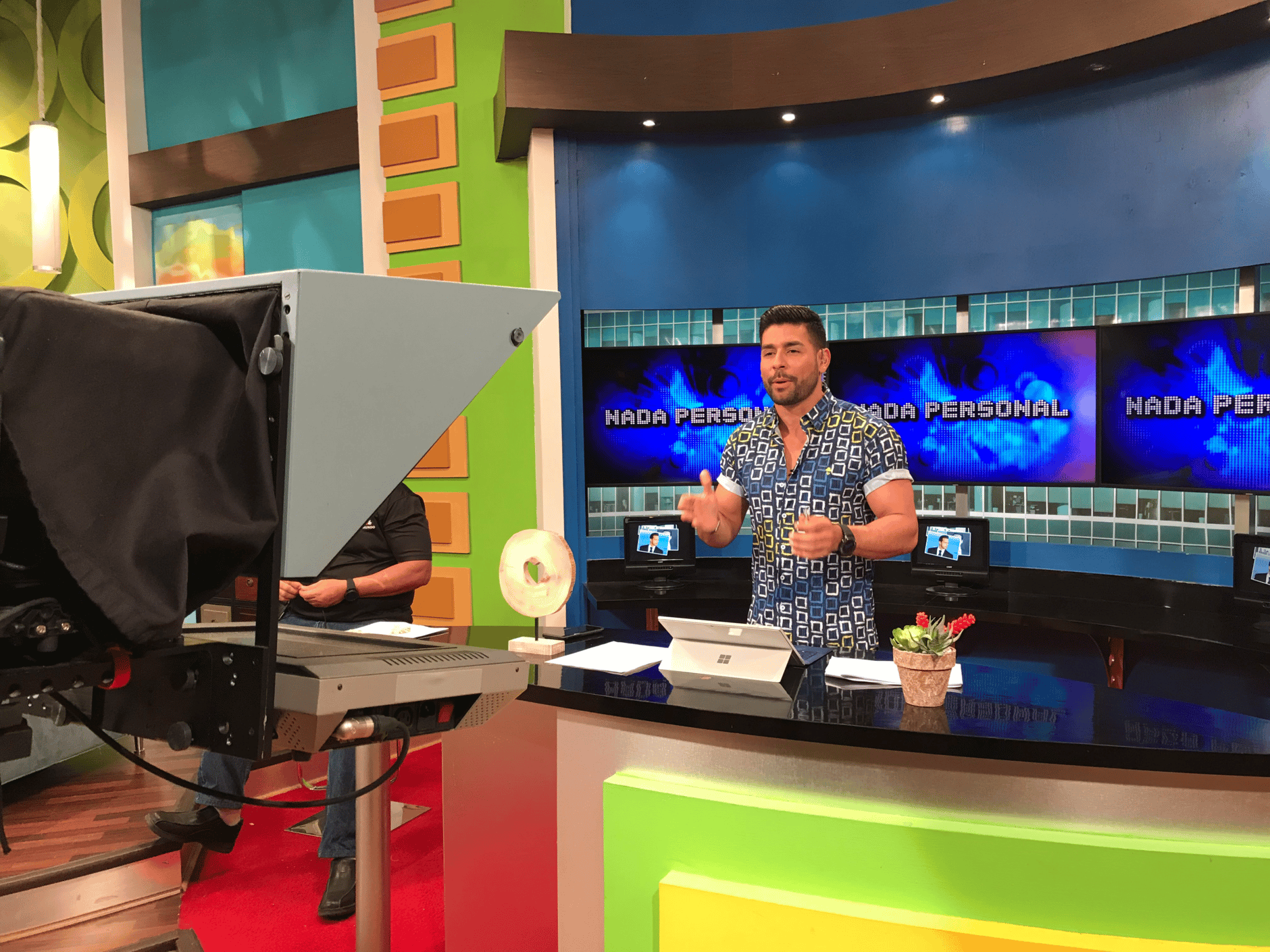With a nimble and scalable network system, Sennheiser and AVL Group equipped WKAQ Television with latest digital wireless audio technology to cover eight television studios and outdoor production areas.
WKAQ, owned and operated by the Telemundo Group and the largest and longest-running television station in Puerto Rico, has laid the foundation for its next phase of audio equipment upgrades with the implementation of a Dante-enabled Sennheiser Digital 6000 wireless microphone system and facility-wide networked antenna installation. Conceived, installed, and commissioned by San Juan-based equipment provider AVL Group and customdesigned by Sennheiser, the new system provides seamless wireless microphone coverage throughout the building’s eight television studios and outdoor production areas.
Same audio network across eight studios
With the new networked Sennheiser setup, each control room is no longer limited to the number of wireless microphone channels installed in the studio but can scale the system up if a production demands it. “It’s just a matter of audio routing,” says Alexander Rojas, AVL Group’s Vice President. In all, the networked antenna system comprises 20 Sennheiser A 2003-UHF passive directional antennas and six A 1031-U passive omni-directional antennas. An equipment rack centrally located in the main hallway interconnects the distributed antenna system and the wireless microphone receiver racks through a series of ASA 214 antenna splitters, ACA 3 antenna combiners and AB 3700 broadband antenna boosters. “WKAQ wanted talent to be able to walk from Studio 1 all the way through the hallways and rear corridors to Studio 8 and have perfect, broadcast-quality coverage all the way,” says Sennheiser’s Andrew Kornstein, Customer Development and Application Engineering, Americas. “It was a very complex requirement. This is not just something that we have in the catalog.” AVL Group pulled more than 8,000 feet of cable for the project, reports Freddie A. Rojas, who led the firm’s post-sales engineering and commissioning team.
AVL Group also delivered a total of 22 Sennheiser EM 6000 Dante two-channel digital receivers plus 14 SKM 6000 handheld transmitters topped by MMD 945 dynamic super-cardioid capsules to WKAQ. Thirty-two MKE 1 miniature clip-on lavalier microphones are paired with 29 SK 6000 pocket transmitters, with three SK 6212 mini-bodypack transmitters additionally available for female on-air talent. All of the equipment uses rechargeable batteries and Sennheiser’s L 6000 rack-mount chargers, says Alexander Rojas. Now, with Sennheiser’s facilitywide coverage seamlessly covering the studios, hallway, lobby and outdoor areas, Rojas says, “They don’t have to switch microphones, because the whole system is on a network.”
Studios 1 through 5 are used to produce WKAQ’s original programming, which includes a weekly comedy sketch show, game shows, an entertainment news show and political news analysis. Studio 8 is used daily for multiple daytime and nightly newscasts as well as a variety and interview show.
Outdoor areas covered with antennas
A number of the shows also make use of some of the public areas of WKAQ’s building in their productions. “There is a large hallway that they wanted to sometimes use on the game shows,” says Alexander Rojas. “Also, the cameras can go into the front yard, which is quite nice, and they also do things in the parking lots.” As part of this project, AVL Group also prewired the rear parking lot, he says. WKAQ had previously standardized on Sennheiser’s 2000 series analog wireless system. “They’ve been a Sennheiser house for 10 or 12 years,” reports Alexander Rojas. Maximizing WKAQ’s prior investment, some of the existing 2000 series antennas were incorporated into the new antenna system. The station also retained an EM 2050 twin analog receiver for use with one show host’s custom fitted microphone. Puerto Rican industrialist Ángel Ramos founded WKAQ-TV in 1954. In keeping with Ramos’ other endeavors, which included the El Mundo (“The World”) newspaper and his first radio station, WKAQ, known as Radio El Mundo, the television station was named Telemundo. Ramos sold WKAQ-TV in 1983 and in a merger several years later its name was adopted by the NetSpan Spanish-language television network, which rebranded as the Telemundo Group.